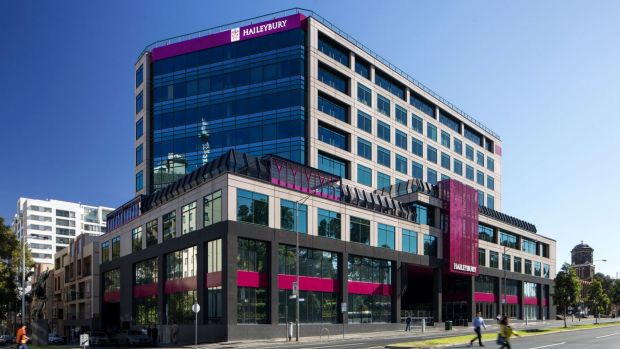Is this the future of schools in space-crammed cities?
Derek Scott is the principal of Haileybury College, which has Melbourne's first vertical school, a place where the teachers get paid by the school to catch public transport to work.

After the Queensland Greens this week pointed to his school as an example for space-pressed Queensland education authorities to consider, Mr Scott jokes he finds it surprising, as a private school principal, to be "a poster boy for the Greens".
At Haileyburg College's newest campus – it has five – students get dropped off by their parents in a modernised basement where they are met by teachers. This is their first push into the CBD; one campus is in an inner-city Melbourne suburb, one is in a middle-ring suburb and another is in an outer-growth suburb – and another is in China.

"In 2012 I started to do some analysis of the demographics in Melbourne's inner-city suburbs," Mr Scott said.
"We did some analysis of the 2006 and 2011 census demographic data which showed some really significant increase in the number of school-aged children," he said.
"It showed a big increase in the zero to three-year age bracket living in those inner-city suburbs.
"Living in apartments and living in the inner-city in West Melbourne and Kensington and in warehouse-type areas.

"Then we did those demographic studies through until 2013 and it showed that trend would only accelerate.
"And then, based on those demographic studies, we began to look for a building."
They considered building a school on top of a car park.
"It was really interesting architecturally, but we couldn't get that to stack up economically."
Instead, Haileybury College renovated an old building in King Street in Melbourne's inner-city from a call centre to a school.
They did not have to change the "building envelope", and did not seek extra height to the building.
They sought a "change of purpose", described as a "material change of use" in Queensland.
The campus has 234 students from year 1 to year 9. It will progressively open years 10-12. They "budgeted" for 150 students in 2017.
"So we are well ahead. Enrolments have been huge. Most of the primary school's levels are already full and there are waiting lists for 2018 for a number of the extra grades," Mr Scott said.
Where is the new primary and high school?
It is straight across the road from Melbourne's oldest park, Flagstaff Gardens in King Street. From this week students at Haileybury College's CBD school play each day in Flagstaff Gardens.
The school received no specific help or incentives from Melbourne City Council, the principal said.
"It had been a NAB call centre, but it had not been owned by the NAB. In fact, we bought it from a Singaporean developer."
Mr Scott said Melbourne Lord Mayor Robert Doyle strongly supported the project and it received unanimous approval from the council, but no relaxations were given.
He said, semi-seriously, the school paid for a pedestrian crossing to be installed outside the school to get to Flagstaff Gardens.
"We had to fund that even though it had been an 'urgent project' on every planning document back to about 2002," he said.
"And that is because Flagstaff Gardens is literally across the street.
"But that is an example of something that the school has funded. But when I stand there this week and looked at the number of local residents and people working there, it has really made the area safer and better."
The college also added a ground-floor cafe for the inner-city workers.
Where do the children play?
"They get two areas – on levels three and four – of outdoor terrace spaces where there is lots of climbing spaces where the junior school plays.
"There is also a 1000 square metres of indoor space including a running track, where they can play ball sports.
"And then on the rooftop there will be another 500 square metre space and a gymnasium which will be built later this year."
The junior school students also play in Flagstaff Gardens.
Were there objectors to the project?
"There were quite a few objectors to the project and the main thrust of their objections was around traffic," Mr Scott said.
"But part of what we have tried to do with this college is tried not bringing cars into the city, but to providing education for people who either lived in the city, or who could catch public transport to the school.
"So we pay for all of our staff to catch public transport. And that is the sort of initiative where we think we are trying to build a good urban initiative.
"And I think that went down well with the two Greens councillors on (Melbourne's) city council," he said.

0 comments
New User? Sign up